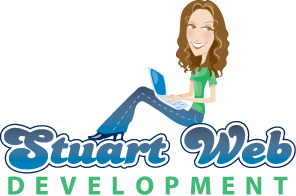News
June 21st, 2010
All WordPress Sites Are Not The Same
I had a meeting with a client the other day about a new site I would be developing for her using WordPress. One of the concerns she expressed to me was that she wanted to make sure it was “not going to look like a WordPress site.” I’ve heard many clients express a similar concern before I start working on the project. If you haven’t ever had a custom template designed and coded for you, and your only knowledge of WordPress comes from looking at blogs, then you are probably not aware how much WordPress can be customized.
Yes, it’s true, for the user that doesn’t need any customizations, you can get a pre-made template that can do everything (or almost everything) you need it to. The problem here is that your site may end up looking too “cookie-cutter.” However, there is a huge amount of customizations that can be done, and if you are not someone who wants to get into the coding aspects, and you’re trying to stand out from the crowd, then you might want to get a little help. This is where I come in.
WordPress 3.0 was recently released, and with it came even more customization options, with menus that can be created an maintained from inside the WordPress admin to creating entirely custom “post types” that have just the fields you need for the information type. More customization options include using custom fields to include additional content, plugins (like the secondary html plugin) to create multiple content areas on one page. You can even set your site up to require (free or paid) memberships (using something like the S2Member plugin). If you’re not incredibly tech savvy, and custom fields are intimitdating or how to use them is hard to remember, then custom panels on the WordPress edit page or post admin can be created too. I’ve also used “shortcodes” so that clients can drop in pieces of code or customization without having to know HTML. I have even added documentation that outlines all the customizations used on the project that can be displayed right on the dashboard when you login.
I have created a number of sites using WordPress as a Content Management System for a variety of business types. When the project is done, clients are very often amazed that the site is powered by WordPress. You just can’t tell from looking at the “front-end.” And of course, by using WordPress, now they have a much easier method for updating their site.
There are so many options, it would be nearly impossible to list them all. Which ones that would be best to use would depend on the project and what the client needs. I do my best to stay up to date with all the different plugins that are available and what can be done with WordPress to make it so that it can function exactly as needed, and I can help you navigate it all and put together a site that is totally unique.
